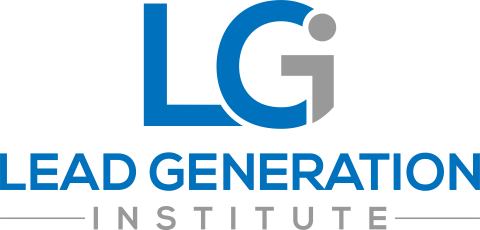The world of today’s modern marketing language can be confusing, with many of its terms used interchangeably or lost in translation. There’s no shortage of confusing terms posing challenges to businesses who are trying their hand at marketing. Today, we’ll try to distinguish demand generation and lead generation.
Both share some similar traits, but the end goals and specific tactics used for each method are different. Understanding what each one is about will help you to create more effective marketing strategies and have greater success at driving revenue to your business. In this post, we’ll define both terms, how they differ from one another, look at the types of marketing activities and tactics that fall under each umbrella term, and how both can complement each other.
What is Demand Generation?
Demand generation, or sometimes known simply as demand gen, is a process by which an organization aims to generate awareness about itself, its products, and services, as well as the industry in which it operates.
Demand generation aims to bring new visitors to your website or business to introduce them to the company, as well as engage and educate your audience. The end goal here is to build a target audience, create product demand, increase brand awareness and reputation, and establish trust, credibility, and interest in your company and field of business.
Common types of demand generation content (offered without stipulation) include:
- Blog posts and articles
- Resource pages
- Social media posts
- Infographics
- YouTube videos
- Podcasts and interviews
- Press releases
- Slide shares
- Free tools
- Case studies
This content is provided without any direct strings attached, meaning that its primary purpose is to attract new customers. During this stage, content consumers won’t have to give you their email or other forms of contact information to access that information. In other words, these are not lead magnets (another term we’ll tackle later on).
Common Demand Gen Tactics
- SEO-Driven Content – Content marketing is one of the most common and widespread forms of demand gen. Creating content that speaks to your target audience is among the surest ways to build awareness. The key, however, is to make sure that it’s SEO-optimized.
The keywords you use should align with your audience’s internet searches, as well as providing them with valuable and useful information. Somewhat recently, Google changed its algorithm, favoring content that provides actual value to the user.
- Guest Posts – This is when you create an article for a popular blog site in your industry. It allows you to reach your target audience by piggy-backing on that site’s traffic and established reputation.
- Industry Blog Adverts – Here, you will run display ads, invest in a sponsored post, or purchase a sponsored email slot from an industry blog that your target audience visits regularly. Similar to guest posting, this will allow you to take advantage of that site’s reputation.
- Free Tools – A great way of building demand for one of your core products is to create and distribute a free tool that compliments it. Take Sprout Social’s Landscape, a tool that resizes social media images and is a complementary feature to Sprout Social’s core social media management platform.
- Self-Inflating Viral Contests – Like any other contest, you will offer a prize to the winner. What makes this different, however, is that you allow participants to increase their odds by referring, sharing, or commenting on the contest itself, increasing its virality as well as your brand’s awareness.
What is Lead Generation?
Lead generation (lead gen) is a marketing activity that focuses on generating leads by moving potential customers through the sales funnel to conversion. The goal is to add qualified leads to your company, which will then be added to your lead nurturing process.
Unlike demand gen, lead gen revolves more around “gated content.” To access this content, users will have to provide their email address or another form of contact information.
Common types of lead generation content include:
- Gated content (eBooks, reports, PDFs, checklists, cheat sheets, whitepapers, etc.)
- Email Subscriptions
- Free-Trials
- Product Demos
- Courses
- Webinars
- Viral Contests (but where people also need to offer their contact information to participate)
- Events
All of these are examples of lead magnets. In short, these are incentives that marketers offer to potential customers in exchange for their email address, or other contact information.
Common Lead Generation Tactics
- eBooks – eBooks are among the most common lead magnets out there. They typically tackle a broad topic within your industry, meaning that you can promote it across multiple blog posts or website pages.
- Content Upgrades – Unlike eBooks, which tend to be more general, content upgrades tackle more specific topics, particular to an individual blog post. Say, for instance, you’re writing a “top 10 list,” and at the end of that list, you add an opt-in for an additional five entries. This is an example of a content upgrade. Other examples include things like how-to instructions, cheat sheets, a PDF version of the blog post, etc.
- Reverse Guest Posting – While guest posting on other blogs is an excellent tool for demand gen, having others write for your blog is useful in lead gen. If the author has a large audience and shares the post with them, you’ll also increase your reach and potential leads.
- Webinars – Hosting a webinar with other experts in your industry can be an effective way of collecting contact information on your target audience. Your audience will be required to register in advance to attend the online webinar.
- Product Explainer Videos – Product demos can generate leads and convert as much as 33% of their traffic into a pipeline. These types of videos don’t have to be high-budget to be effective as long as they’re well edited and offer sufficient value.
The Demand Generation – Lead Generation Balancing Act
Though different, both demand gen and lead gen are part of the same team. They allow sales and marketing to work together and guide the prospect down the sales funnel. You don’t have to choose between one or the other as they create a synergy within the broader marketing strategy.
When you are creating content, you should always take into account the goal for which you’ve created that content. For instance, if you’ve created an eBook (typically a lead gen tool), but your goal is to generate awareness, you are still in the realm of demand generation. To maximize your results, you shouldn’t ask people to provide their contact info, but instead, offer that eBook freely. This will increase the number of people who will access it and will increase the chances of them sharing it with others. If your goal is to get qualified leads, then that eBook should, of course, be gated.
This, however, raises a problem for some marketers. For starters, the same piece of content can’t satisfy both demand and lead generation. That same eBook can’t be free and gated at the same time. If you try to do too much with one piece of content, you run the risk of alienating your audience.
In some cases, your audience may feel like you’re trying to trick them by first giving them something (demand gen) only to swoop in at the last moment to get their information (lead gen). On the other end of the spectrum, they may feel engaged enough to hand over their info (lead gen) only to find their experience with your content becoming too watered down with background/generic information (demand gen).
It’s also quickly becoming easier for marketers to focus too much on lead gen rather than demand gen. Since lead gen has more straightforward metrics (eBook downloads, webinar subscriptions, etc.), it’s understandable why marketers may tend to focus on lead generation more than demand generation. Nevertheless, demand generation is critical for organizational longevity, too, even if the returns are less noticeable.
Thinking outside of the box.
If you only had time to read two or three publications related to your industry, would you read a vendor website or a third-party vendor agnostic industry publication?
Most of us would read the third-party vendor agnostic industry publication. Why? Vendor websites have an ulterior motive, and that’s to drive awareness and leads. Most of us would think their content is biased in some fashion or another and prefer more of a neutral publication with multiple perspectives.
So depending on your content marketing budget, it might make sense to develop your publication related to the industry in addition to content specific to your products and services. That way, you can invite multiple thought leaders who are complimentary to your products and services vs. only having content focused on just your products and services. This co-marketing perspective can be very effective at increasing awareness and demand on the publication site as well as traffic to the vendor site where you focus your lead generation efforts.
It is an excellent example of demand gen – lead gen balancing act put in practice.
If you want to learn more about how to leverage these strategies, feel free to contact us or subscribe to our newsletter.




